History
Kirstead Hall
In 1095 the site was part of the outlying lands of the Abbey of Bury St Edmunds. The distance between the church and the village’s location in present-day is thought to have been due to the Black Death which struck in 1450. The old village’s population decreased resulting in a new one being built in a different location.
Under the reign of Henry VIII c.1535 the abbey was closed due to the introduction of the Church of England and the site was bought by John and Elizabeth Cook. In 1544 the building and surrounding land was bought by Thomas Godsalve who was a lawyer in the Court of Norwich to expand his large estate.
The building was inherited by his son Sir John Godsalve who was Clerk of the Signet to Henry VII and under Edward VI was Comptroller of the Mint. His son Thomas in turn took over ownership and extended it to become a house and the hall it is today. [11]
Kirstead War Memorial
To the right of St Margaret's Churchyard lies Kirstead War Memorial which honors the memory of the 17 people who gave their lives in World War 1. [12]

Reedham is a village and civil parish in the English county of Norfolk and within The Broads. It is on the north bank of the River Yare, some 12 miles (19 km) east of the city of Norwich, 7.5 mi (12.1 km) south-west of the town of Great Yarmouth and the same distance north-west of the Suffolk town of Lowestoft.
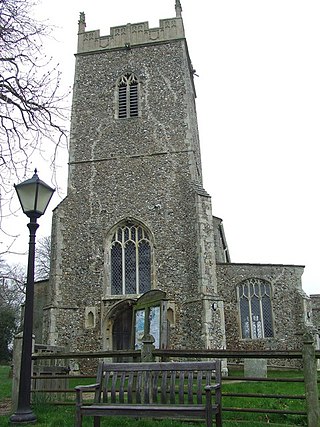
Cratfield is a village in northern Suffolk, England. "It has a population of 292 according to the 2011 census." Neighbouring villages include Laxfield, Metfield, Cookley, Huntingfield, Heveningham. The nearest town, Halesworth, is approximately 6.7 miles (10.7 km) away. Southwold is a popular, nearby coastal town. The market town of Framlingham is also close by.

Acton Turville is a parish in the Cotswold Edge ward within South Gloucestershire, England. It lies 17 miles (27 km) east-northeast of Bristol and 93 miles (150 km) due west of London, with the M4 south of the parish. Acton Turville consists of a cluster of households across 1,009 acres, with a total population of 370 people. Acton Turville is also listed as "Achetone" in the Domesday Book.
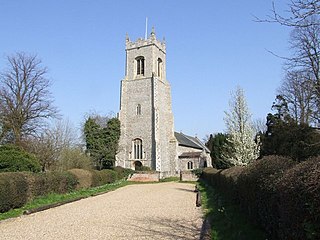
Alburgh is a village and civil parish in the English county of Norfolk. It lies about four miles (6 km) north-east of Harleston and 16 miles (26 km) south of Norwich.

Beetley is a village and civil parish in the Breckland district of Norfolk, England. According to the 2011 census the parish had a population of 1,396. The village is situated four miles (6 km) north of East Dereham.

Knodishall, a village in Suffolk, England, lies 3.5 miles (6 km) south-east of Saxmundham, 1 mile (2 km) south-west of Leiston, and 3 miles from the coast, in the Blything Hundred. Most dwellings are now at Coldfair Green; just a few remain in the original village by the parish Church of St Lawrence, which falls gently on the north side of the Hundred River valley. It is now an outlier of Knodishall Common, a settlement a mile to the south-east. The estimated parish population was 790 in 2019.

Wacton is a village in the English county of Norfolk. It is located about one mile south-west of Long Stratton and 13 miles (21 km) south west of Norwich. It covers an area of 4.54 km2 (1.75 sq mi) and has a population of 302 people as of the last census in 2011

Farnham is a village and civil parish about 3 miles (4.8 km) south-west of Saxmundham in the English county of Suffolk on the A12 road. Farnham is located west of Friday Street, south of Benhall Low Street and north-east of Stratford St Andrew.
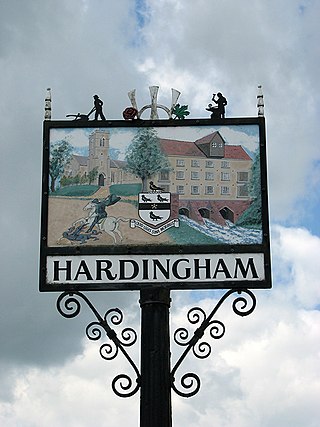
Hardingham is a civil parish in the English county of Norfolk. It covers an area of 4 square miles with a population of 274 in 110 households at the 2001 census, decreasing to a population of 267 in 107 households at the 2011 Census. For the purposes of local government, it falls within the district of Breckland. The parish includes the hamlet of Danemoor Green about one mile north-east of the main village. An interesting fact about Hardingham is that a philanthropist opened a school nearby which gave local children a higher standard of education than was usual in a rural farming area. (date?) The village is most notable for Hardingham railway station, a stop on the Mid-Norfolk Railway. It is a few miles away from the town of Wymondham, and roughly fifteen miles from Norwich.

Heveningham is a village and civil parish in the East Suffolk district of Suffolk in eastern England. Located four miles south-west of Halesworth, in 2005 it had a population of 120.

Finningham is a village and civil parish in the Mid Suffolk district of Suffolk in the East of England, located approximately 7.5 miles north of Stowmarket and 16 miles from the county town of Ipswich. In 2011 its population was 480.

Palgrave is a village and civil parish in the Mid Suffolk district of Suffolk in eastern England. It is located on the south bank of the River Waveney, opposite Diss and adjacent to the Great Eastern Main Line.

Great Livermere is a village and civil parish in the West Suffolk district of Suffolk in eastern England. It is located around four miles north-east of the borough's largest town Bury St Edmunds.
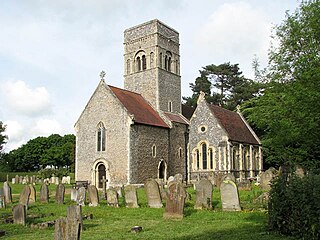
Gillingham is a small village and civil parish in the English county of Norfolk. The villages is located 1.5 miles (2.4 km) north-west of Beccles and 15 miles (24 km) south-east of Norwich, along the A146 between Norwich and Lowestoft.

Outwell is a village and civil parish in the borough of King's Lynn and West Norfolk, in the English county of Norfolk.
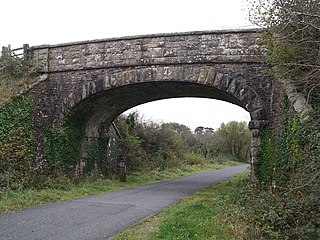
Sourton is a small village and civil parish in West Devon, England. It lies about 4 miles (6.4 km) south-west of Okehampton. It is at the north-western extremity of Dartmoor, a National Park of England and Wales, and lies along the A386 road. The historic map of Sourton shows that it is located near a river and the Sourton forest this can be seen in the image below.
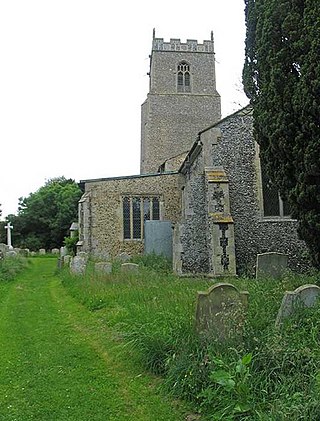
Tibenham is a village and civil parish located in the Depwade district of South Norfolk, England. The parish is 2 miles (3.2 km) north west of Tivetshall railway station. It has a public house called The Greyhound.

Great Moulton is a civil parish in the English county of Norfolk. Until the 16th century it also included the Little Moulton parish.

Whinburgh and Westfield is a civil parish in the English county of Norfolk. It covers an area of 7.56 km2 (2.92 sq mi) and had a population of 307 in 134 households at the 2001 census. 10 years later it has a population of 342 according to the 2011 census. For the purposes of local government, it falls within the district of Breckland. The civil parish is located south of the nearby town Dereham and is formed from the two ancient parishes which centred round the churches of St Mary's Whinburgh and St Andrew's Westfield, and until 1894 the churches performed all the functions of local government. Norfolk was a county of small villages and parishes. The County of Norfolk Review Order, 1935, sought to rationalise this, and under this Westfield Parish was 'abolished' and merged with Whinburgh Parish. The name of the resultant parish was not changed from Whinburgh. For many years nothing was done about the parish's name, but on 2 August 1995, at the request of the Parish Council, Breckland Council sealed a 'Notice of the Change of Parish Name' and the parish then became Whinburgh and Westfield.

Huntingfield is a village near the B1117 road, in the East Suffolk district, in the county of Suffolk, England. The village is close to the source of the River Blyth and the parish is 12 miles from the seaside town of Southwold. Nearby settlements include the town of Halesworth and the villages of Walpole, Heveningham, Cookley and Laxfield.
























